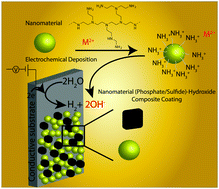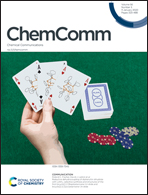Overcoming the barrier of conventional electrochemical deposition of inorganic composites†
Abstract
We present an electrochemical approach for depositing composites made of two insoluble inorganic materials, which cannot be obtained by the conventional electrochemical deposition from ionic speices. Applying a negative potential in an aqueous solution generates OH−, which simultaneously destabilizes dispersed nanomaterials, such as insoluble phosphates and sulfides and causes the deposition of a metal hydroxide from its dissolved ions.



 Please wait while we load your content...
Please wait while we load your content...